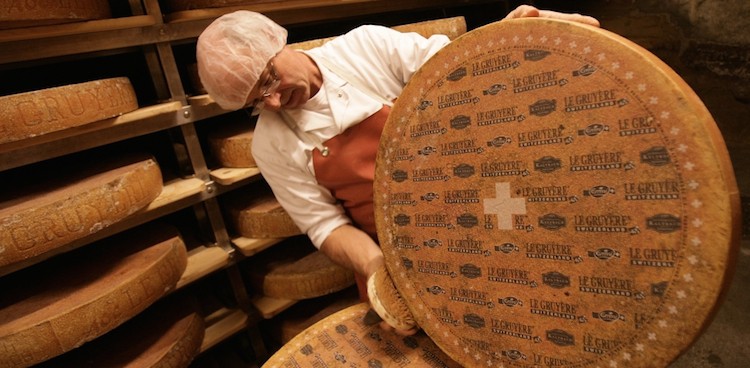
The distinct and subtle flavors in every cheese speak volumes about the animals, ingredients, and processes used to produce it. A taste of grass or hay is a good indicator of a young small-farm cheese, while hard, dry textures tell of great age and solitude–a cheese that’s been untouched for years. But as you taste the origins of each piece, you’re also savoring the history and culture that brought this type of cheese from some grazing animal’s udder to your hungry mouth; You’re eating potentially thousands of years of history with each bite.
Public Radio International recently asked artisanal cheesemonger Matt Rubiner if cheese was the ultimate history book. His answer: of course it is: “When I see a piece of cheese, it’s just a pure expression of the place from which it came.” Not only do the flavors highlight the local resources, but, according to Rubiner, the location also dictates which type of cheese is made. “You make cheese that the land tells you to make.”
He uses Italy as an example: the inhospitable southern climate makes cattle herding impractical; thus, Italian cheesemakers lower on the boot favor sheep’s milk cheeses like pecorino. Alternatively, moist coastal and river valley regions make for the best provolone, which requires humidity for its malleable texture.
In Southern Italy, he says, farmers couldn’t raise cattle because of the poor quality of the land. And because they were never invaded by Saracen armies, which brought goats along with soldiers, the only animals available were sheep. So even today, the region produces sheep cheeses like pecorino.
In France, any goat cheese will tell the story of invading armies. In fact, goats were never indigenous to the region; they were herded over and left behind during Moorish conquests dating back to the eighth century. So when you’re chomping down on that Crottin de Chavignol, you’re actually chowing on the corpses of those who fought, tooth-and-nail, to keep France free from goat subjugation (kidding…sort of).
This is made all the more interesting by the fact that archaeologists are finding more and more samples of cheese left behind by ancient cultures, either in pottery or in mummified bodies. While they likely won’t be tasting those any time soon (ew!), it just goes to show that within cheese lies thousands of years of human history. Encyclopedia Britannica should really get into the cheesemaking business.
Photo Credit: Michael Buholzer/Reuters via PRI



